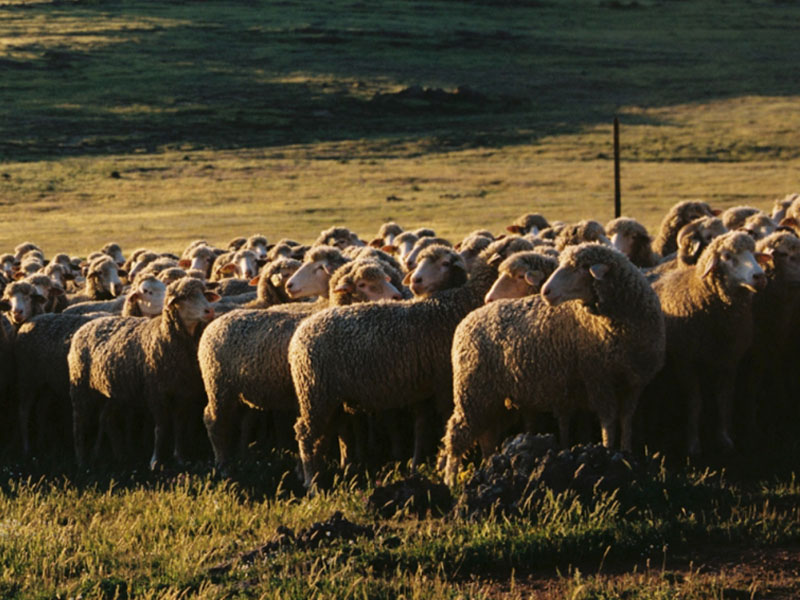Merino Wool
Variety: Merino wool
Fibre origin: Sheep of the Merino sheep breed.
Origin: Regions of Spain. Castile and Leon, Extremadura, Andalusia and Catalonia, among others.
Characteristics:
- The natural fibre is composed mainly of keratin.
- The length of the fibre ranges from 60 to 120 millimetres.
- The diameter of the fibre varies between 18 and 24 micrometres.
- The colour of Spanish merino wool is off-white.
- Resistant to breakage and wear.
- Highly insulating, capable of retaining body heat and maintaining a temperature.
- It is resilient, it does not deform, not even in the points that stretch the most (elbows, knees, ...).
Merino wool is one of the most popular types of wool in the world. It comes from the Merino sheep breed, which is native to the Iberian Peninsula and has been bred in Spain for several centuries.
This breed is highly prized for the quality of its wool, which has traditionally been used for high-quality clothing. Today, Spanish merino wool is still produced in different regions of Spain, such as Castilla y León, Extremadura, Andalusia and Catalonia, among others.
Like many types of wool, it is also highly absorbent, waterproof and insulating.
Merino wool is one of the oldest and most exclusive textile fibres in the world. Its fineness, length and characteristic crimp distinguish it from other sheep breeds.
Associations such as Genuine Merino® are responsible for keeping the Spanish Merino sheep, its wool and its culture alive. Merino wool has become a mark of purity and tradition in its own right.
HISTORY OF MERINO WOOL
Merino sheep were bred in Spain in the late Middle Ages and remained a strict Spanish monopoly for several centuries; exports of the breed were forbidden, and those who dared to do so were punished with the death penalty.
The courts of several European nations received flocks during the 18th century, notably France (where they were known as the Rambouillet), Hungary, the Netherlands, Prussia, Saxony and Sweden. Later, the Merino breed became popular throughout the world, especially in South Africa, Australia and New Zealand.
American Merino and Delaine Merino in America, Australian Merino, Booroola Merino and Peppin Merino in Oceania, and Gentile di Puglia, Merinolandschaf and Rambouillet in Europe are just some of the recognised breeds, strains and varieties that have evolved from the original type.
A sheep can produce four to five kilos of Merino wool per year, as it is a natural and renewable fibre. In addition, this fibre has been developed over time to keep sheep comfortable in harsh environments. These sheep can comfortably stay outdoors in sub-zero temperatures. It is a truly extraordinary fibre.
The Merino breed has been preserved thanks to the National Association of Merino Cattle Breeders (ACME) created by the Ministry of Agriculture in 1975 and the initiative of a group of farming families.
More than 100 herds currently belong to the ACME. This association has a record book where they certify and guarantee the purity of the Merino sheep.
WHAT ARE ITS ORIGINS?
The three theories about the origins of the Merino breed in Spain are:
- the importation of North African herds in the 12th century;
- its origin and improvement in Extremadura in the 12th and 13th centuries;
- the selective crossbreeding of Spanish sheep with imported rams at various times, which led to the development of its characteristic fine wool in the 15th century.
All theories place the origin of the Merino breed in North Africa, agreeing that the breed developed later by the immigration of North African rams and an initial population of North African sheep similar to the types from Asia Minor.
During the Islamic occupation of Spain, wool production was not particularly important, and the first historical records of unmistakably Merino wool date back only to the early 15th century.
Modern Merino sheep are thought to be the result of various crosses between Spanish churras sheep, Italian wool sheep and even English sheep types, according to recent genetic studies; it is not clear exactly when these crosses occurred.
Regardless of the exact origins of the Merino sheep, by the end of the 15th century, Spain was already a direct competitor of England in the European wool market thanks to this domesticated, wool-producing breed.
CHARACTERISTICS OF WOOL
Merino wool is one of the most valued fibres in the textile industry due to its numerous properties. Some of these properties are listed below:
Softness: Extremely soft and pleasant to the touch.
Thinness: Merino wool fibre is very fine, which makes it more comfortable to wear.
Resilience: Merino wool is known for its high resilience, which means that it can recover its original shape after being subjected to some stress or deformation. This is due to the unique structure of merino wool fibres, which have an outer cuticle that allows them to resist stretching and compression.
Thermal insulation: excellent thermal insulation, which makes it ideal for winter garments. Thanks to its ability to retain heat, merino wool helps to keep the body warm in extremely cold conditions.
Body temperature regulation: able to regulate body temperature, keeping the body cool in hot conditions and warm in cold conditions.
Moisture wicking: absorbs up to 30% of its weight in moisture without the garment feeling damp. In addition, merino wool is also able to evaporate moisture quickly, keeping the garment dry and comfortable.
Odour resistance: it is naturally odour resistant, thanks to its antibacterial properties. This means that Merino wool garments can be worn for several days at a time without needing to be washed.
Durability: Merino wool is very strong and durable, which means that garments made with this fibre can last for many years if properly cared for.
Conclusion
Merino wool is a high-quality textile fibre that stands out for its softness, durability and beneficial properties for health and comfort. Its use in the manufacture of clothing and accessories is very popular thanks to its insulating, breathable and body temperature regulating properties, making it ideal for use in all kinds of situations and activities.
In addition, merino wool is a natural and sustainable fibre obtained from Spanish merino sheep, which guarantees its origin and quality.



Users Reviews